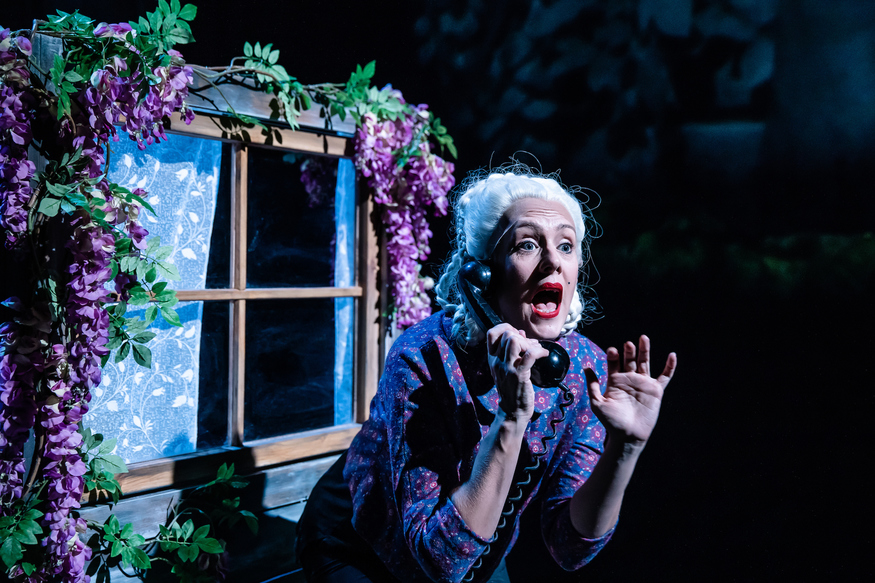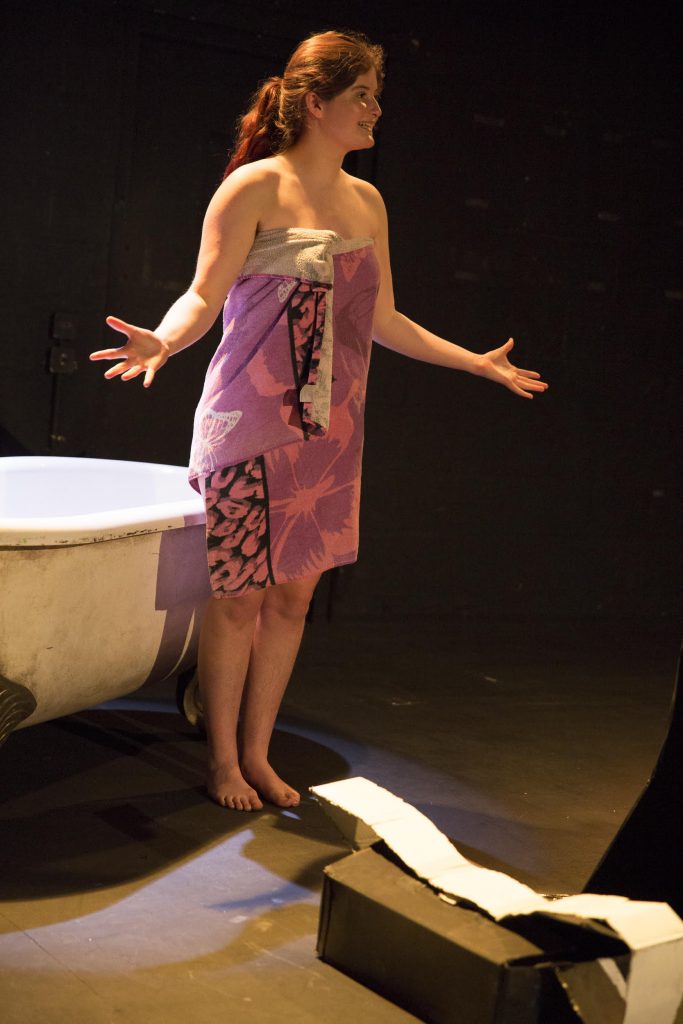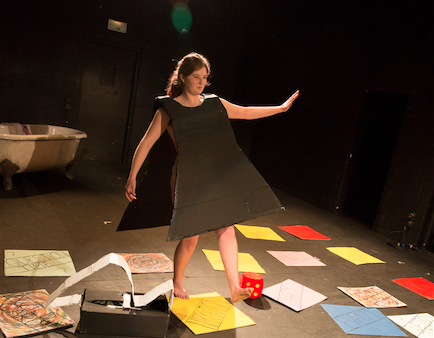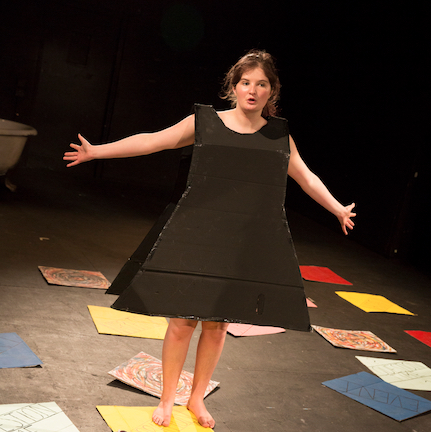What happens when crisis takes centre-stage? Lila Robirosa reflects on the challenges of making autobiographical work based on your own trauma
The past year for me has been one distinctly lacking in crisis. (Now there’s a first line to an article you didn’t expect to read in 2021, a year on from the first UK lockdown!) Despite the world quite literally falling to pieces around me, I was ahead of the trend, having my mass-meltdown in 2019. I can’t say that 2019 was a bad year, exactly. The only thing I can say about it that feels true is that it was a year of extremes – extreme highs, extreme lows, extremely extreme extremeness in all directions.
As such, notions of crisis and chaos took centre-stage in my practice, becoming an essential fuel for the work I went on to make in my final dissertation: an interactive board game which revealed episodes from the story of my coming out, at random, using the roll of the dice.
Entering 2020 and experiencing the inevitable burnout that comes as part of the package deal of graduating from drama school, and watching the state of crisis envelop all of those around me and my sector as a whole, I found myself with time to reflect on some poignant questions around this intensely vulnerable work. First, is this a safe and healthy approach to making work? For both me and for my audience? And second, if this is possible, is it worth it? Does it make good work? What does it offer?
Making autobiographical work based on your own crisis or trauma is quite obviously fragile territory. The risks, as Meg-John Barker explains in their blog Rewriting the Rules (21 August 2019), are clear: ‘You could end up hurting yourself by trying to write about something which is still too raw and painful. The writing could stray into something over-sharing or self-focused in a way that doesn’t really connect with others. […] It could feel too vulnerable if people respond critically to it once you’ve put it out there.’
Although Barker is discussing these risks in the context of writing, I think they are just as relevant to the world of performance art. Certainly, these kinds of fears are very present for me in my work. I have all sorts of ‘ick’ feelings about doing what I do. All sorts of doubts around my work being utterly self-indulgent and self-serving. Yet there is a part of me that has become certain that exploring crisis, chaos and vulnerability is at the heart of what I want to communicate with my audience.
I think a big part of why navigating this kind of work can be so difficult is because of the need to juggle safety with risk. To achieve success there is a huge paradox around the equal necessity for these opposing forces. It is a delicate balancing act of guiding the audience through a tragic, vulnerable, uncomfortable or even dangerous story enough to prod at the boundaries and inspire a new perspective, whilst keeping a sense of safety and reassurance intact.

Dorothy Max Prior examines this balance in her review of autobiographical performance artist Bryony Kimmings’ most recent production, an artist whose impressive repertoire of work draws almost exclusively on her personal crises. Prior says of her most recent show – I’m a Phoenix, Bitch! which explores Kimmings’ battle with post-natal depression following her baby son becoming seriously ill – ‘We are taken to the edge of the precipice, and we are brought back again. Harrowing though it all is, I never feel that she will push us or herself too far. It is all done with kindness, and delivered like a gift.’ (Total Theatre Magazine online review, May 2019.)
For audience and performer alike, this foundation of safety is essential for the risk and vulnerabilities of the work to hold. However, judging exactly how to arrive at the edge of that precipice, not too far and not too short, is a fine art to master.
It would be misrepresentative to say that the risk associated with treading this line doesn’t sometimes backfire, even for highly skilled and experienced professionals such as Kimmings. In an interview with The Guardian (15 September 2019) she admitted about her run of I’m A Phoenix, Bitch! in Edinburgh, ‘I did it for three weeks, I had this huge breakdown and was back on my meds.’
In this way, I think the very real risk element is both the success and the downfall of work of this nature. Taking risks, pushing yourself and your audience, is so often what makes work exciting and innovative, but at the same time it can leave us exposed to harm.
There is a huge contradiction in that whilst safety is essential to exploring risk constructively and successfully in artistic work, the nature of risk is precisely that safety is not ensured and indeed, sometimes this side of the bargain takes its toll. Despite the uncertainty of working in this murky area, I believe the interplay between these opposing forces is the dramaturgical engine driving work of this nature.
To put it in another context, when a circus performer walks the tightrope, we are captivated because they are taking a huge risk – they could fall. Obviously, we don’t want them to fall. Watching them is enjoyable because we know – almost for certain – that they won’t. But that ‘almost’ is important. There is a tension held between safety and danger in that moment. There is the safety in the fact that the performer in question is a professional in conflict with the objective danger of the stunt.

The same is true of autobiographical work that draws on crisis/trauma. With good experience and training we can become more skilled at our trade but the danger of the stunt remains. We cannot omit it. And if we did, if there was no tightrope – no risk or vulnerability, the impact of the stunt would be lost.
Meg-John Barker suggests using an exposure scale to navigate this blurry line, ‘If the exposure scale goes from 0-10 perhaps 5-6 is that sweet spot for things that are real and vulnerable in ways that stretch you a useful amount, and will likely connect with other people. But over a 7 is into the too-vulnerable zone and worth leaving till it feels less live.’ (Rewriting the Rules blog 21 September 2019.)
Locating this stretch zone, and where exactly it sits for me, is something I have begun to explore in my work. After my dissertation performance one of my tutors said to me: ‘As an audience member, it felt like no matter what you said or did, you would be okay.’ This was really important to know and likely integral to the success of the piece but, internally, I knew that this capability had been sitting on a knife edge. Internally I felt myself only just holding my nerve, only just being safe. For me, despite the risk, this is the point at which I find it exciting to make and share work. To explore how to be as vulnerable as possible whilst still being safe and relevant is where the curiosity I have for my work lies.
But why? What is the motivation for navigating this treacherous path, full of risk and uncertainty? What does it offer us as artists and what does it offer our audiences?
The feeling that Kimmings’ title I’m A Phoenix, Bitch! evokes is a good place to start. Talking about the thinking behind it in an interview with Lyn Gardner (in Run Riot 18 September 2018), Kimmings said: ‘That rather aggressive title came to me at a point when I was finally able to articulate that what I had been through the year or so previously had been a brutal and damaging trauma. Something comes in that moment; a power. It was like all the injustice, the sheer brute force it took to survive it, the anger and pain all surged in one thought. It’s over. I did it. I wanted to scream this phrase from rooftops: “I am a phoenix, bitch” in my loudest voice. Because you don’t get much from surviving traumatic events, there is little mercy or grace. But you do have one thing. You are still here. And for me in that moment, that was enough.’
I think she’s right. When we understand that we have survived a crisis, when we are able to name it as such and see that we are still here, there can be a huge surge of motivation to make ourselves seen and heard – and taking to the stage is about as seen and heard as you can get. On a scientific level, this idea is supported by the Substance Abuse and Mental Health Services Administration (SAMHSA), whose research into The Phases of Disaster shows that after this initial ‘Impact Phase’, it is common for people to experience an increased desire to connect with others. (The emergence of the weekly clapping for the NHS in the Covid crisis is a good example of this.) From this it can be understood that this increased desire for connection can act as a great motivator for making work during or about crisis.
But why does trauma, crisis and chaos need to be heard from an audience perspective?
Barker suggests: ‘There is what Patrick Califia calls an antidote to shame in writing vulnerable stuff. This is often the stuff that we fear, deep down, might not be okay about us. Writing it and putting it out there is a way of saying “this is me, with all my inevitable frailties and failings and flaws and I’m still okay.”’
I think people, audiences, need to hear that. I think I need to hear that too and I ask questions that require vulnerability in my work in order to hear that for myself, but also to make it heard for others. Contrary to popular belief, making vulnerable, autobiographical work that explores crisis is not some sadomasochistic attempt to (metaphorically) slit your wrists open on stage and make people bear witness to your suffering – and thus suffer too. But rather it is about the work becoming a radical form of self-care and collective healing – a way to hold your sufferings up to the world as a reminder of your (and humankind’s) resilience and survival. This kind of work is the stage equivalent of looking a close friend straight in the eyes, shaking them, and saying, ‘Hey, I’ve got you. You’re going to be okay’.
People come to the theatre to see a part of their existence reflected back to them. As Kimmings said in her interview with Lyn Gardner, ‘It’s a mistake to think people are there to see you. They aren’t, they’re there to see themselves.’ And what is the one thing that unites every single living person? The usual answer is that we are all destined for death but, turning this on its head, you could equally argue that what unites us, is that we have all survived this far. Despite the sometimes lonely uniqueness of our journeys to get here, there is a commonality in that we have all made it to this point. So for me, in my practice, there is a universality that exploring crisis enables. Every story of crisis has within it a story of survival and resilience that everyone can relate to through their mere mortality.
Whilst the risk associated with this work raises valid questions around the reliability of its safety and its success, I am beginning to wonder if it is this very uncertainty that makes this work so affirmatively reflective of life – and art’s – true experience. As Ted Bayles and David Orland say in their book Art and Fear: ‘Making art is chancy – it doesn’t mix well with predictability. Uncertainty is the essential, inevitable and all-pervasive companion to your desire to make art. And tolerance for uncertainty is the prerequisite to succeeding.’
This past year has surely tested the limits of this tolerance. But in a year characterised so strongly by crisis, work which is able to hold the complexity of suffering alongside resilience, safety alongside danger and personal alongside universal, has never been more relevant.
Now all we need is for the theatres to reopen…
Featured image (top): Lila Robirosa: The Game of Life. Photo by Michael O’Reilly
References:
Meg-John Barker Rewriting the Rules (book, 2016, and blog, ongoing)
Bryony Kimmings: https://www.bryonykimmings.com/
David Bayles and Ted Orland: Art & Fear: Observations on the Perils (and Rewards) of Artmaking (Image Continuum Press, 2002)
Lila Robirosa is a performance artist, theatre-maker and writer based in Suffolk. Lila took part in the Total Theatre Artists as Writers programme 2020.
www.powertopurple.wordpress.com


